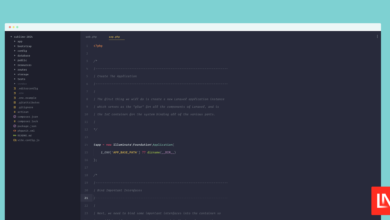20 Javascript Tools Revolutionizing Web Development Today

JavaScript, the dynamic programming language, has undergone significant transformations, playing an important role in the evolution of web development. With these changes, an abundance of tools has emerged, reshaping the way we build websites. In this exploration, we’ll explore the 20 JavaScript tools that have become integral in web development, understanding their functionalities, significance, and impact on shaping the web development world.
Webpack: Streamlining Code Bundling and Optimization
In the world of modern JavaScript development, Webpack has shaped a niche as a strong module bundler that extends its capabilities beyond just JavaScript. It efficiently bundles and optimizes CSS, images, and assets. Its modular architecture, complemented by loaders and plugins, simplifies dependency management, fostering organized and optimized code structures. Webpack supports both development and production builds, and its hot module replacement (HMR) allows real-time updates during development, enhancing developer productivity.
React: Declarative Syntax for Dynamic User Interfaces
Developed by Facebook, React has gained popularity for crafting dynamic and interactive web applications. Its component-based structure and the utilization of a virtual DOM contribute to improved application performance by minimizing direct interactions with the actual DOM. React’s declarative syntax facilitates the creation of complex user interfaces, and it provides a vast range of tools, including Redux, for state management. This makes React a powerful choice for scalable and maintainable applications, utilizing modular and reusable components.
Npm: Facilitating Dependency Management and Collaboration
Node Package Manager (npm) is a reliable tool for managing JavaScript packages in Node.js. It simplifies package installation, management, and sharing. Beyond handling project dependencies, npm encourages collaboration by providing a vast collection of open-source packages. This centralized hub allows developers to specify required packages easily in a file called package.json, promoting efficient project development through shared resources.
ESLint: Elevating Code Quality through Static Analysis
ESLint serves as a static code analysis tool empowering developers to enforce coding standards and identify potential issues in their JavaScript code. Focusing on consistency and code quality, ESLint offers customizable rules, ensuring adherence to specific coding conventions and best practices. Its adaptability, achieved through plugins and configurations customized for popular frameworks and libraries, positions ESLint as a versatile tool for enhancing JavaScript code readability and maintainability.
Gulp.js: Automating Development Tasks for Efficiency
Gulp.js is a valuable tool for automating repetitive tasks in projects, such as file size reduction, code concatenation, and test execution. Its code-focused approach, coupled with plenty of available plugins, simplifies task customization for developers. Gulp.js excels in handling CSS styles and code compression, contributing to an accelerated development process while maintaining simplicity in setup and usage.
Sublime Text: A Lightweight and Customizable Text Editor
Sublime Text stands out as a favored text editor among developers due to its speed, ease of use, and extensive customization options. Its lightweight nature, coupled with features like distraction-free mode, a split editing window, and a command menu, enhances the coding experience. Supporting various programming languages, including JavaScript, Sublime Text’s responsiveness makes it a suitable choice for projects of any scale, ensuring a smooth and productive coding environment.
Vue.js: Striking a Balance Between Simplicity and Functionality
Vue.js is a JavaScript framework known for its simplicity and flexibility. Recognized for its reactive system, seamless integration with existing projects, and organized component handling, Vue.js appeals to developers working on both small and large applications. Its incremental adoption allows developers to utilize specific features as needed, making it easy to learn and widely popular.
Angular: A Comprehensive Framework for Dynamic Web Applications
Developed by Google, Angular is a comprehensive JavaScript framework customized for building interactive web applications. Following the Model-View-Controller (MVC) structure, Angular provides tools like two-way data binding, dependency injection, and a modular setup. It excels in handling large applications, emphasizing code organization and reusability through clear templates and a Command Line Interface (CLI).
Visual Studio Code: A Feature-Rich, Cross-Platform Code Editor
Visual Studio Code, commonly known as VSCode, is a popular free code editor appreciated for its powerful features. With built-in Git support, effective error detection, and a variety of add-ons, VSCode provides a flexible and user-friendly interface for JavaScript developers. It supports multiple languages and frameworks, offering a lightweight yet powerful coding environment that is regularly updated, ensuring compatibility across various platforms.
WebStorm: A Powerful IDE Customized for JavaScript Development
Developed by JetBrains, WebStorm is a strong Integrated Development Environment (IDE) designed specifically for JavaScript, HTML, and CSS development. Its intelligent suggestions, efficient navigation, and strong debugging tools enhance the coding experience. WebStorm seamlessly integrates with version control systems and supports popular frameworks and libraries, making it an efficient choice for JavaScript developers working on complex projects.
Debugbar: Browser Extension for Effortless JavaScript Debugging
Debugbar, a browser extension, simplifies JavaScript debugging by providing a set of tools directly within the browser. It facilitates tasks such as displaying messages in the JavaScript console, monitoring network activity, and inspecting code in real-time. Compatible with various browsers, Debugbar is user-friendly, helping developers gauge the application’s performance and troubleshoot issues efficiently, whether on the front-end or back-end.
Eclipse: A Versatile IDE for JavaScript Development
While traditionally associated with Java development, Eclipse has expanded its support to include web development, making it a versatile tool for JavaScript coding. Known for its customizable nature and extensive feature set, Eclipse allows developers to enhance JavaScript coding capabilities through its plugin system. Features like syntax highlighting and integrated debugging contribute to a comprehensive coding environment for JavaScript projects.
Express.js: Streamlining Server-Side Logic with Minimalism
Express.js is a straightforward web framework for Node.js, simplifying the creation of strong and scalable web applications. Equipped with tools for managing responses to different web addresses, handling intermediate tasks, and processing internet requests, Express.js allows developers to focus on the core aspects of their applications. Its minimalist approach, utilizing middleware, makes it an excellent choice for building RESTful APIs and server-side applications backed by a supportive community.
jQuery: Simplifying DOM Manipulation and Event Handling
Despite the rise of newer frameworks, jQuery remains relevant due to its simplicity and cross-browser compatibility. Known for simplifying tasks such as DOM manipulation, event handling, and data requests, jQuery is a lightweight option for front-end development. Its concise and widely adopted code streamlines common tasks without the need for excessive coding, making it suitable for projects where a full-fledged framework might be overly burdensome.
JS Bin: Real-Time Collaboration for JavaScript Experimentation
JS Bin serves as a platform for real-time experimentation with HTML, CSS, and JavaScript. Enabling developers to test and share code instantly, JS Bin is invaluable for trying out new ideas and collaborating with colleagues or a broader audience. Live previews of code behavior and collaborative features make JS Bin an excellent tool for exploring various front-end libraries and frameworks.
Mocha: Feature-Rich Testing Framework for JavaScript
Mocha takes center stage as a feature-rich JavaScript testing framework supporting both browser and Node.js environments. Its flexibility and developer-friendly testing structure accommodate various assertion libraries and testing styles, including Behavior-Driven Development (BDD) and Test-Driven Development (TDD). Asynchronous testing capabilities and comprehensive reporting contribute to Mocha’s appeal for projects of all sizes, ensuring reliability and quality in JavaScript applications.
Package Manager: Npm vs. Yarn – A Choice for Dependency Management
The choice between npm and Yarn, both package managers for Node.js, adds a layer of complexity to JavaScript development. While npm is the default and widely-used package manager, Yarn has gained popularity for introducing additional features. Yarn can install packages without an internet connection, ensures consistent dependencies, and supports simultaneous package downloads. The decision between npm and Yarn often revolves around personal preferences and project-specific requirements, considering factors like speed, security, and dependency consistency.
Testing Frameworks: Jest, Jasmine, and QUnit
Various testing frameworks, including Jest, Jasmine, and QUnit, play an essential role in ensuring the functionality and quality of JavaScript code. Developers choose a framework based on project complexity and testing preferences. Jest stands out for its speed and user-friendly features, including snapshot testing. Jasmine adopts a Behavior-Driven Development (BDD) style, supporting diverse methods of verification. QUnit, developed by the jQuery team, is suitable for smaller projects. The choice of a testing framework depends on project needs and the testing approach preferred by the development team.
AWS Cloud9: Cloud-Based IDE for Seamless Development
AWS Cloud9 emerges as a cloud-based platform customized for developers, enabling code writing, running, and debugging directly in a web browser. Facilitating real-time collaboration, AWS Cloud9 empowers developers to work together, share code, and effortlessly set up development environments. Supporting multiple programming languages, including JavaScript, eliminates the need for local setups, promoting efficiency and teamwork through collaborative features.
Browserify: Bridging Node.js Modules for Client-Side Execution
Browserify serves as a tool bridging Node.js-style modules for execution in web browsers. Simplifying the grouping of CommonJS modules for client-side execution, Browserify handles dependencies and consolidates everything into a single bundle, promoting organized JavaScript code. Its integration into the development process encourages a modular approach to code organization, considered a best practice for maintaining clarity and manageability.
If you’re eager to gain the skills required to work in a challenging, rewarding, and dynamic IT role – we’ve got your back! Discover the endless opportunities through this innovative Full Stack Web Developer – MERN course. Enroll today!
FAQs
1. What are the essential tools for a JavaScript beginner?
Essential tools for a JavaScript beginner include a text editor (e.g., Visual Studio Code), a web browser (e.g., Google Chrome), and a version control system (e.g., Git). Additionally, familiarity with developer tools in browsers is crucial for debugging.
2. Which is the best tool to run JS code?
JavaScript code can be run directly in a web browser. Most modern browsers like Google Chrome, Mozilla Firefox, and others have built-in developer tools that allow you to execute and debug JavaScript code efficiently.
3. How do I choose between different JavaScript frameworks?
Choose a JavaScript framework based on your project requirements, community support, ease of learning, and scalability. Popular frameworks include React, Angular, and Vue.js. Evaluate their documentation, community forums, and project structure to find the one that aligns with your needs.
4. What is the best JavaScript tool?
There isn’t a single “best” JavaScript tool, as it depends on your specific needs. However, widely acclaimed tools include Visual Studio Code as an editor, Git for version control, and npm (Node Package Manager) for managing dependencies.
5. What’s the best way to ensure the security of my JavaScript code?
Ensure code security by validating inputs, avoiding eval(), using secure coding practices, and staying informed about common security vulnerabilities. Regularly update dependencies and follow security guidelines provided by the libraries and frameworks you use.
6. How can I improve the performance of my JavaScript application?
Optimize performance by minimizing DOM manipulations, using efficient algorithms, lazy loading assets, and leveraging browser caching. Additionally, employ tools like Lighthouse for performance audits and profiling tools in browsers.
7. What are the benefits of using a package manager in JavaScript projects?
Package managers like npm or Yarn simplify dependency management, version control, and project structure. They enable easy sharing of code, automate tasks, and ensure consistent environments across different development stages. Package managers also facilitate seamless updates and reduce the risk of dependency conflicts.



